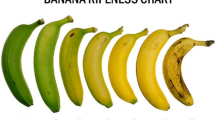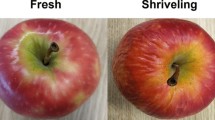Summary
Results of treating about 3,000 bushels of potatoes a year with ethylene chlorohydrin to break the rest period have indicated that varietal differences exist, necessitating variations in the treatment of tubers to secure uniform results from the growth in Florida. When each potato variety is treated in a certain way with respect to temperature, ventilation, and liberation of ethylene chlorohydrin, 95 per cent of the tubers produce plants large enough to furnish a virus percentage reading by the end of January.
Similar content being viewed by others
Author information
Authors and Affiliations
Rights and permissions
About this article
Cite this article
Porter, W.F., Simpson, G.W. The use of ethylene chlorohydrin for breaking the rest period of large quantities of potatoes. American Potato Journal 24, 9–14 (1947). https://doi.org/10.1007/BF02894369
Issue Date:
DOI: https://doi.org/10.1007/BF02894369




